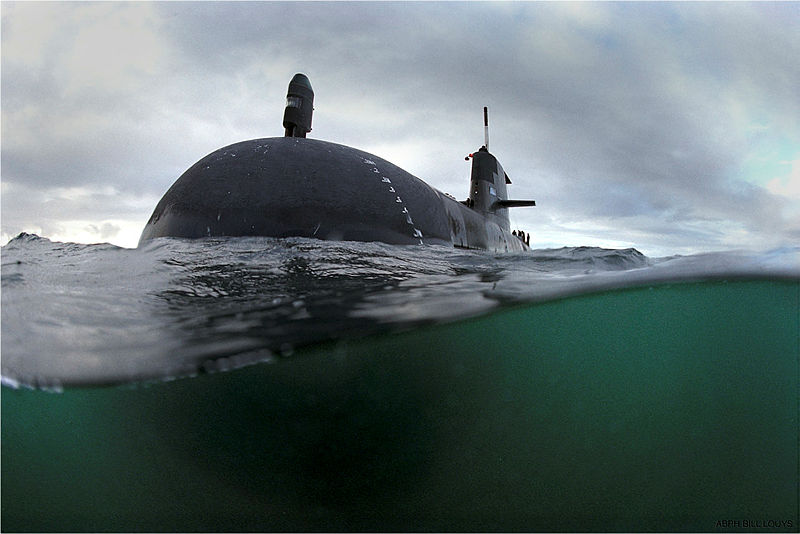Diving deeper into SEA 1000: life spans and design choices
Posted By
Kym Bergmann
on March 21, 2016 @ 11:00

James Goldrick’s recent post for The Strategist shows that many classes of submarine remain in service for a period of 30–40 years. By this calculation alone, the Collins Class won’t need to retire until the mid-2030s, especially if they were to undergo a life-of-type extension program. However, the real measure of the longevity of a submarine isn’t its age in years but rather the number of deep dives it has performed.
Only the RAN knows exactly how many times each Collins Class has reached its highly classified maximum depth and has therefore been compressed close to its design limits, but it’s safe to assume that they have a lot of remaining margin. That’s because they were designed to go very deep indeed. Diving depth is dependent on a number of factors, including the ‘roundness’ of the hull, because the more perfect it is, the greater is the ability for enormous pressures to be distributed absolutely evenly across its surface. A great deal of effort was expended on this regarding the Collins, as well as the composition of the steel used for construction.
It should be remembered that Collins was specified at the height of the Cold War and one important role for it was as a Submarine as Submarine-Killer. It was assumed that in the event of a wider conflict in some cases they could be up against Soviet deep diving nuclear submarines, such as the Akula Class, which could go down to a reported 600 metres. Incidentally, that appears to be the only reason why we use the US Mk 48 ADCAP heavyweight torpedo, which apart from the ability to go down to enormous depths is inferior to rival European designs in every other respect.
After the end of the Cold War—which occurred well before the launch of the first Collins in 1993—there was no longer any need for really deep operations. Additionally, some mechanical concerns—mainly to do with welds and valves—meant that for a considerable time the safety-conscious RAN imposed strict limits on diving depths. Combine those issues and it’s reasonable to suppose that there’s a great deal of life left in the medium-aged Collins dog.
Australia possesses one of the quietest submarines in the world, as well as one with enormous diving depth. The Collins platform is also becoming increasingly easier and therefore cheaper to maintain. That means that Defence is right not to proceed in a mad rush to find a replacement. But why replace it with a completely new class at all?
For bizarre reasons, that argument was lost years ago but is worth returning to. Every other country that has learned how to build submarines has gone on to use this hard won expertise to develop new classes based on the skills and knowledge that have been acquired. A lot of work has been done by ASC and Saab Kockums on what a new generation Collins would look like—but in the chaos of SEA 1000, all of that has been ditched.
Given that the result of the future submarine Competitive Evaluation Process—if there is one—will be a brand new bespoke design, a sensible hedging strategy would be to re-engage with Saab Kockums and take advantage of what’s probably several hundred million dollars’ worth of collective effort. The Government and the Defence Department have painted themselves into a corner with the CEP. As things stand, they risk receiving a ‘take it or leave it’ offer three or four years from now. There surely needs to be an alternative.
Without any choice, Australia could be placed in a position of enormous strategic peril. Far better that in parallel we continue to keep a New Generation Collins as part of the mix. Defence has rejected the idea of selecting two submarine designers from the current CEP process on the grounds that they lack the people and cash to support a further competition to select the builder of the future submarine. By all means hope that the CEP leads to a satisfactory result. Keeping a New Generation Collins on the table won’t cost much extra money and what cash is required will be more than offset by the benefits of commercial pressure on whoever the successful designer turns out to be.
Kym Bergmann is the editor of Asia Pacific Defence Reporter and Defence Review Asia, and worked for Saab from 1998–2005.
Article printed from The Strategist: https://www.aspistrategist.org.au
URL to article: https://www.aspistrategist.org.au/diving-deeper-into-sea-1000-life-spans-and-design-choices/
[1] recent post: http://www.aspistrategist.org.au/just-how-long-can-submarines-remain-operational/
 Print This Post
Print This Post